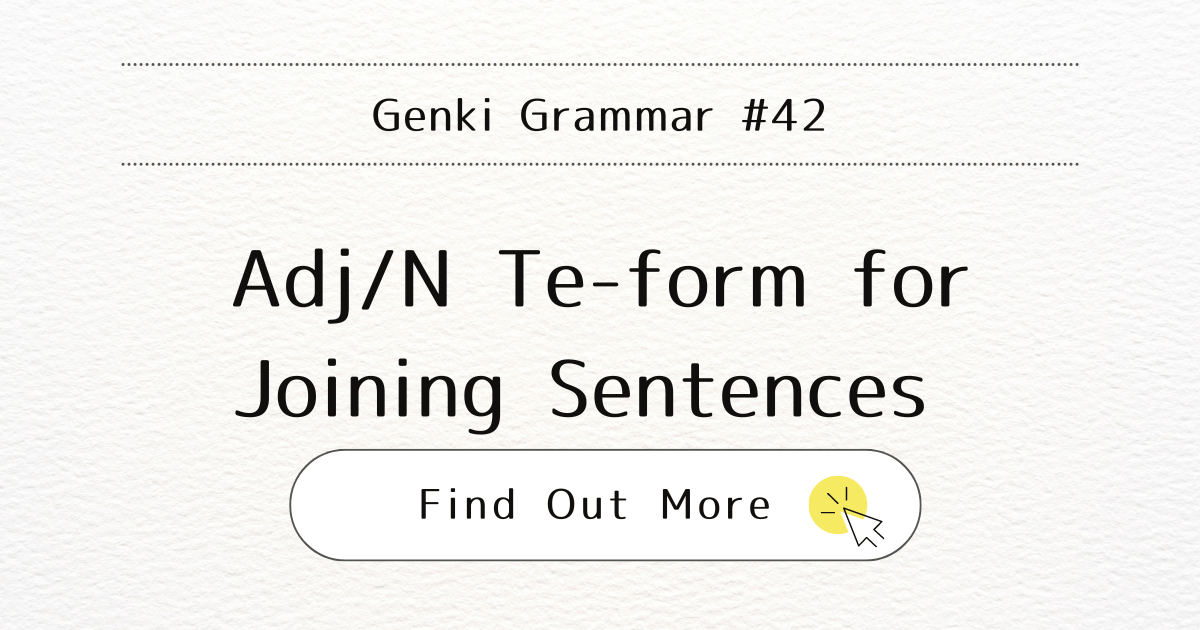
Introduction
In the previous post, we discussed using verbal te-forms to join sentences. In this post, we will learn how to use te-forms of い-adjectives, な-adjectives, and nouns to combine two elements and form longer sentences in Japanese.
What It Means
The te-form of an い-adjective is created by replacing the final い (i) with くて (kute). For な-adjectives and noun + です (desu) sequences, the te-form is made by adding で (de) to the base adjective or noun.
When You Use It
Use these te-forms when you want to join two sentences or clauses to describe multiple qualities or actions.
Examples
い-Adjectives
- 安い (yasui) → 安くて (yasukute)
- (Irregular) いい (ii) → よくて (yokute)
な-Adjectives
- 元気(な) (genki (na)) → 元気で (genki de)
Noun + です
- 日本人です (nihonjin desu) → 日本人で (nihonjin de)
Example Sentences
食堂の食べ物は安くて、おいしいです。 (Shokudou no tabemono wa yasukute, oishii desu.) – The food at the canteen is inexpensive and delicious.
日本はきれいで、よかったです。 (Nihon wa kirei de, yokatta desu.) – Japan was clean, and we were happy.
佐藤先生は日本人で、30歳ぐらいです。 (Satou-sensei wa nihonjin de, sanjuu-sai gurai desu.) – Professor Satou is Japanese and he is about thirty years old.
Note
Just like with the te-form conjunction of verbs, you can use the te-form conjunction of adjectives and nouns in sentences describing both the past and the present. The last adjective or noun in the sequence determines the overall tense of the sentence. For example:
- 映画は面白くて、楽しかったです。(Eiga wa omoshirokute, tanoshikatta desu.) – The movie was interesting and fun.
- 彼は学生で、20歳です。(Kare wa gakusei de, hatachi desu.) – He is a student and is 20 years old.
Conclusion
Mastering the te-forms of adjectives and nouns allows you to create more complex and descriptive sentences in Japanese.



